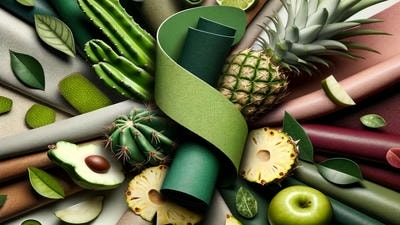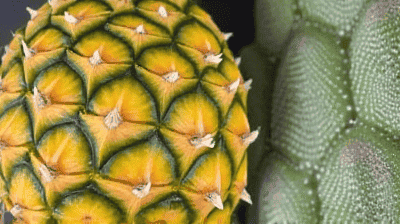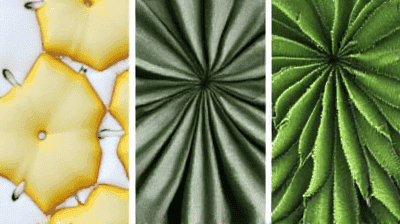
Fashion has long been tied to cultural expression, individuality, and creativity. However, the industry is facing increasing scrutiny regarding its environmental and ethical implications. The rise of fast fashion has resulted in significant waste, pollution, and resource depletion, prompting a shift towards more sustainable practices. Enter plant-based fashion materials—a revolutionary movement that promises to reshape the industry by utilizing natural resources to create eco-friendly alternatives to traditional textiles.
Plant-based fashion materials are textiles derived from renewable plant sources rather than synthetic fibers or conventional animal products. These materials offer a sustainable alternative with reduced environmental impacts, such as lower carbon emissions, decreased water usage, and minimal waste. The movement emphasizes upcycling and innovation, creating luxury products that prioritize ecological responsibility.
Environmental Impact: The textile industry is one of the largest polluters globally, contributing to carbon emissions, water pollution, and waste generation. Sustainable fashion seeks to mitigate these effects by using eco-friendly materials and practices.
Resource Conservation: Plant-based materials promote resource conservation by leveraging renewable resources and reducing the dependence on fossil fuels, which are commonly used in synthetic fabrics.
Animal Welfare: The rise of plant-based materials offers a cruelty-free alternative to traditional leather and fur, addressing ethical concerns surrounding animal rights.
Consumer Awareness: As consumers become more environmentally conscious, demand for sustainable fashion continues to grow. Brands that embrace plant-based materials demonstrate their commitment to social responsibility.

What is Pineapple Leather? Pineapple leather, also known by its brand name Piñatex, is a sustainable textile made from the fibers of pineapple leaves. Instead of discarding these agricultural byproducts, Piñatex utilizes them to create a durable and eco-friendly alternative to leather.
Production Process The production of pineapple leather involves several steps:
Harvesting: Pineapples are harvested, and the leaves are collected as a byproduct of the fruit industry. This process helps farmers maximize their yield by generating additional income from otherwise wasted materials.
Extraction: The fibers are extracted from the leaves through a process involving soaking, washing, and then mechanical separation. This eco-friendly technique ensures minimal environmental impact.
Processing: The extracted fibers are then treated and processed to enhance their durability and appearance. This may include dyeing, coating, and finishing.
Benefits of Pineapple Leather
What is Cactus Silk? Cactus silk, also known as Nīkol, is a textile made from the fibers of the cactus plant, particularly the prickly pear cactus. This ancient material has been used for centuries in various cultures, but it is now making a resurgence in modern fashion.
Production Process The process of creating cactus silk involves several steps:
Harvesting: Cactus pads are harvested from prickly pear cacti without harming the plant. This process allows for the sustainable harvesting of fibers while maintaining the health of the cactus.
Extraction: The fibers are extracted by scraping the cactus pads to separate the cellulose fibers from the plant material.
Spinning and Weaving: The extracted fibers are then spun into threads and woven into fabrics, often incorporating traditional craftsmanship techniques.
Benefits of Cactus Silk
What is Tencel? Tencel is a brand name for lyocell, a fiber made from sustainably sourced wood pulp, primarily from eucalyptus trees. It is produced using a closed-loop process that recycles solvents and water, minimizing waste.
Production Process The Tencel production process includes:
Benefits of Tencel
What is Hemp? Hemp is a versatile and sustainable crop known for its strong fibers. It has been used for thousands of years in various applications, including textiles, rope, and paper.
Production Process Hemp production involves:
Benefits of Hemp
The adoption of plant-based fashion materials offers significant environmental advantages:
The rise of plant-based materials supports local economies by providing income opportunities for farmers and artisans. Sustainable practices promote job creation in agricultural sectors while encouraging fair trade and ethical practices.
Consumers increasingly demand transparency and ethical practices from fashion brands. Plant-based materials align with these values, offering cruelty-free alternatives to traditional textiles and promoting responsible sourcing and production processes.

Despite the many benefits, the transition to plant-based fashion materials faces certain challenges:
The initial production costs of plant-based materials can be higher than synthetic alternatives. Research and development are needed to optimize production processes and reduce costs, making these materials more accessible for brands and consumers.
While consumer interest in sustainable fashion is growing, awareness of plant-based materials is still relatively limited. Brands must invest in educating their target audience about the benefits and uses of these innovative textiles.
Scaling production of plant-based materials to meet growing demand requires investment in infrastructure and technology. Collaborative efforts among an industry of producers, innovators, and researchers are essential for overcoming scalability challenges.
Advancements in material science will continue to drive innovation in plant-based textiles. Researchers are exploring new ways to extract and process fibers from various plants, expanding the range of sustainable materials available.
Biodesign refers to the collaboration between biology and design to create innovative products. The integration of biodesign principles in fashion will drive the development of materials that are both beautiful and sustainable, enhancing the appeal of plant-based offerings.
The concept of circular fashion emphasizes the importance of designing products for longevity and recyclability. Plant-based materials naturally align with this model, as they are often biodegradable and sourced from renewable resources.
As the demand for sustainable fashion grows, collaboration between brands, designers, and producers will be critical. These partnerships will facilitate knowledge sharing, promote best practices, and drive innovation in plant-based fashion materials.
Governments and regulatory bodies are beginning to implement legislation focused on sustainability and ethical practices in the fashion industry. Enhanced standards will encourage the adoption of plant-based materials and promote transparency in supply chains.

The rise of plant-based fashion materials, from pineapple leather to cactus silk, marks a significant shift in the fashion industry towards sustainability and ethical practices. As consumers become increasingly aware of the environmental and social impacts of their choices, the demand for innovative and eco-friendly materials will continue to grow.
By embracing plant-based materials, the fashion industry has the opportunity to reduce its ecological footprint, promote resource conservation, and support local communities. As we look to the future, the integration of plant-based textiles into mainstream fashion will pave the way for a more responsible and sustainable industry—one that honors our planet and reflects the values of conscious consumers.